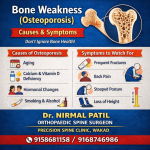For many women, the days leading up to menstruation can bring physical discomfort and emotional changes. These symptoms are commonly known as PMS (Premenstrual Syndrome). However, for some women, these changes are much more severe and can interfere with daily life. This more serious condition is known as PMDD (Premenstrual Dysphoric Disorder).
Though both PMS and PMDD are related to hormonal fluctuations in the menstrual cycle, they differ in intensity, symptoms, and impact. Recognizing the difference is crucial for seeking timely treatment and improving quality of life.
What is PMS (Premenstrual Syndrome)?
PMS refers to a collection of physical, emotional, and behavioral symptoms that occur 1–2 weeks before menstruation begins and usually resolve once the period starts. It affects up to 75% of menstruating women at some point in their lives.
Common PMS Symptoms:
- Mood swings
- Irritability or anger
- Bloating and abdominal discomfort
- Breast tenderness
- Fatigue
- Headaches
- Cravings (especially for sweets or salty food)
- Sleep disturbances
These symptoms are usually mild to moderate and manageable with lifestyle changes, stress reduction, and over-the-counter medications.
What is PMDD (Premenstrual Dysphoric Disorder)?
PMDD is a severe, chronic medical condition that affects about 3–8% of women. It includes many of the same symptoms as PMS but to a much more intense and debilitating degree. PMDD is considered a mental health disorder and is listed in the DSM-5 (Diagnostic and Statistical Manual of Mental Disorders).
Common PMDD Symptoms:
- Severe mood swings
- Depression or feelings of hopelessness
- Intense irritability or anger
- Anxiety or panic attacks
- Difficulty concentrating
- Sleep disturbances (insomnia or excessive sleep)
- Fatigue or low energy
- Loss of interest in usual activities
- Physical symptoms like bloating, joint pain, and breast tenderness
These symptoms can disrupt work, relationships, and daily functioning, and in some cases, women with PMDD may even have thoughts of self-harm or suicide.
Key Differences Between PMS and PMDD
| Factor | PMS | PMDD |
|---|---|---|
| Severity | Mild to moderate | Severe and disabling |
| Mood Symptoms | Present but manageable | Dominant, intense, and disruptive |
| Duration | Appears 5–7 days before periods | Begins a week or two before periods and subsides shortly after |
| Daily Functioning | Rarely affected | Significantly affected |
| Diagnosis | Based on symptoms | Requires symptom tracking and clinical evaluation |
| Treatment | Lifestyle changes, OTC meds | Medical treatment often necessary (e.g., antidepressants, hormonal therapy) |
What Causes PMS and PMDD?
The exact cause of PMS and PMDD isn’t fully understood, but both are linked to hormonal changes during the menstrual cycle—especially estrogen and progesterone fluctuations.
In PMDD, these hormonal changes trigger abnormal responses in the brain’s serotonin pathways, which regulate mood, emotion, and sleep. This is why PMDD is more closely associated with mood disorders like depression and anxiety.
Diagnosis of PMDD
There is no single test for PMDD. Diagnosis is based on:
- Tracking symptoms for at least 2–3 menstrual cycles.
- Noting timing of symptoms (they must appear in the luteal phase—after ovulation and before the period).
- Severity and impact on daily life must be clearly noticeable.
- Excluding other conditions like depression, anxiety disorders, or thyroid issues.
Women are usually asked to maintain a daily symptom diary or use a standardized questionnaire like the Daily Record of Severity of Problems (DRSP).
How to Manage PMS?
PMS symptoms can often be managed by:
- Regular exercise (helps regulate mood and reduce cramps)
- Balanced diet rich in whole grains, vegetables, and calcium
- Reducing caffeine, alcohol, and salt
- Stress management techniques like yoga, meditation, or deep breathing
- Over-the-counter pain relievers (for cramps or headaches)
- Vitamin supplements (Vitamin B6, magnesium, and calcium may help)
How is PMDD Treated?
Because PMDD is more serious, it often requires a multimodal treatment approach:
1. Medications:
- SSRIs (Selective Serotonin Reuptake Inhibitors): First-line treatment to improve mood symptoms.
- Hormonal treatments: Birth control pills or GnRH agonists to suppress ovulation.
- NSAIDs: For pain and cramps.
2. Lifestyle changes:
- Regular sleep, exercise, and stress reduction.
- Avoiding triggers like caffeine and processed foods.
3. Cognitive Behavioral Therapy (CBT):
- Helpful in managing emotional symptoms, especially when combined with medication.
When Should You See a Gynaecologist?
You should consult a gynaecologist if:
- Your symptoms before periods are interfering with your daily life.
- You feel extremely sad, angry, or anxious before your periods.
- You’re experiencing relationship difficulties or work issues due to mood changes.
- You suspect you may have PMDD and want a professional evaluation.
- Your PMS symptoms are not improving despite lifestyle changes.
Early diagnosis can lead to better outcomes and significant relief.
For Consultation Contact us on 9168690447 / 9158681123
Website –
Address – Chetna Hospital, Sambhajinagar, MIDC, G Block, Near Rotary Club, Chinchwad 411019
.
.
.
#hospital#pune#pcmc#chinchwad#health#healthcare#gynaecologist#femalegynaecologist#gynaecologistappointment#gynac#gynaecologistdoctor#gynaecologisthospital#goodgynaecologist#gynaecologistspecialist.













